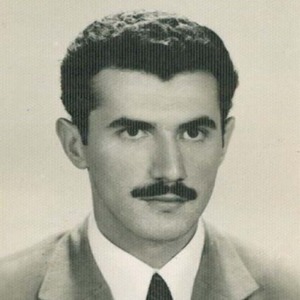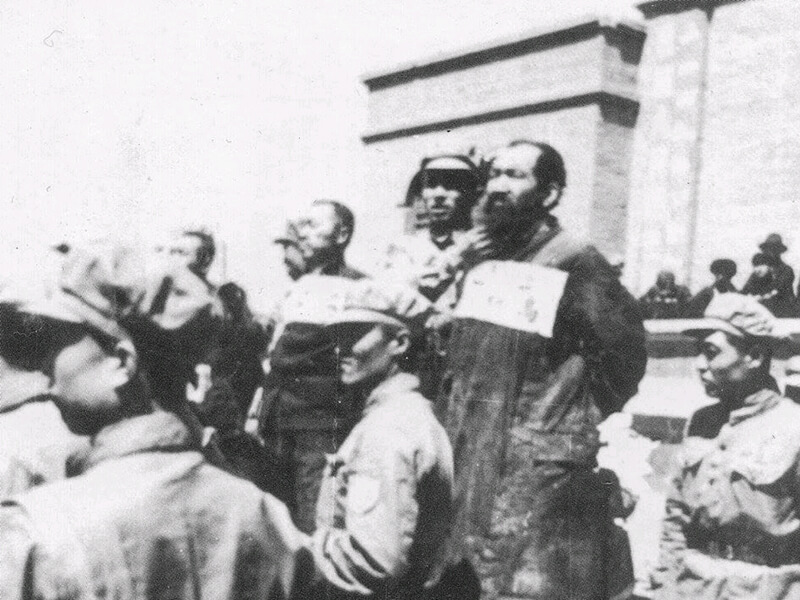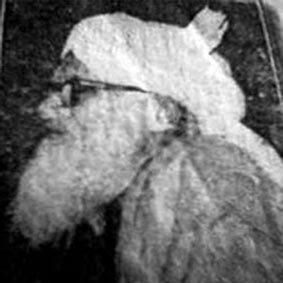Born in Kashmir on 27th of Shawwal 1292 A.H. (November 25, 1875)
Passed away in Deoband on 3rd Safar 1352 A.H. (May 27, 1933)
“The Past five hundred years of Islamic history cannot produce the like of Maulana Kashmiri” (Dr. Muhammad Iqbal)
Who could have explained the excellence of Maulana Anwar Shah Kashmiri better than the poet of the East, Dr. Muhammad Iqbal? Maulana Kashmiri was the teacher of the teachers and was the personification of Islamic knowledge. The universal message of Islam has always produced individuals that are totally devoted to the Islamic cause and spend their entire lives serving Allah’s mission on Earth. The renowned Muslim scholars have used different methods to convey the message of Islam and fight evil, disbelief, hypocrisy and oppression throughout history. The Ulama of Deoband can truly be credited with preserving the true teachings of Islam, as taught by the Quran and Hadith, and fighting evil and oppression by means of knowledge.
Through knowledge, it was believed that the Muslim heart and mind will be reactivated with the same emotions and intentions possessed by his fore fathers, the true defenders of Islam. Amidst this process of safeguarding Islam, Darul Uloom Deoband produced such lofty scholars and elite Muslim intellectuals that had been the glory and honour of the Muslim past. One of these illustrious personalities was Hadhrat Maulana Muhammad Anwar Shah Kashmiri.
Mufti Taqi Usmani says: “A unique kind of happiness would come over my father’s face when the name of Hadhrat Shah Sahib was heard and he would remember him with utmost respect and love” (Akabir Deoband Kia They?, p. 41). Allama Kashmiri was a favorite of his teachers and students. His peers loved him and one and all came to him to solve those academic misunderstandings that can only be deciphered by one of the most knowledgeable scholar of the times. One remains astonished after reading the accounts of his heightened knowledge, acute memory and profound understanding of Deen. Saints like Maulana Abdul Qadir Raipuri witnessed his excellence and said: “Indeed Hadhrat Shah Sahib is a sign from the signs of Allah” (Akabir-e-Ulama-e-Deoband, p. 98).
The greatest Islamic scholar and reformer of the Fourteenth century Hijri, Maulana Ashraf Ali Thanvi, says: “According to me, a great proof of the truth of Islam is the presence of Maulana Anwar Shah Kashmiri in the Muslim Ummah. If there was any sort of crookedness or deficiency in Islam, then Maulana Anwar Shah would not have adopted it” (Akabir-e-Ulama-e-Deoband, p. 98). When Shah Sahib is considered as a great proof of Islam by none other than the prestigious Hadhrat Thanvi, what more can one say in respect of his virtues? However, the eyes that witnessed his noble personality and countenance never forgot that embodiment of light and erudition.
Those who saw him once would be full of Islamic glory and enthusiasm that they cannot remain silent, some words, some sentences of their experience must be told to the world. They must inform others that we have seen a unique and divine sign of Allah, so unique that its like cannot be found in the past five hundred years of Islamic history. Accordingly, we find praise of Shah Sahib on the lips of generation after generation of Muslims, who have recognized what he is and what he did. His profound personality claims that he should be remembered and his teachings, which are nothing more than the explanation of the Quran and the Hadith, should be exhibited in actions, fortified on paper and shared in public. He was a tree from the original garden of Islam, a flower from the initial bouquet of Deen.
His academic peers belonged in the early days of Islam as Syed Ata’ullah Bukhari has said: “The caravan of the Sahaba was trekking and Allama Anwar Shah Kashmiri was left behind” (Akabir-e-Ulama-e-Deoband, p. 99) Left behind for who and to accomplish what? He was a glory from the early glories of Islam that been saved by Allah to educate the creation of Allah in Deen and defend Islam from all enemies. If anybody tries to misinterpret the Quran, his Mushkilatul Quran is there to defend the Quran. Those who misconstrue the Ahadith, his famous Arabic book Faydh al-Bari and the Urdu book Anwarul Bari, both commentaries of Saheeh Al-Bukhari, are there to shield the sayings of the Most Revered Rasul (Sallalahu Alayhi Wasallam).
His books on Islamic jurisprudence in the light of Imam Abu Hanifa’s school of thought are the cause of his permanent place of respect and honor in the hearts of all Hanafis. He expressed his loyalty to the Seal of all Prophets (Sallalahu Alayhi Wasallam) by writing Khatimun Nabi’een. He proved to all Christians of the world that the real admirers of Jesus the Son of Mary are the Muslims and rebuffed the claims of the false Messiah of Qadian by writing Aqeedatul Islam fi Hayatul Eisa Alayhis Salam and At-Tasreeh bi ma Tawattar fi Nazool al-Maseeh.
Mujaddid-e-Millat Maulana Ashraf Ali Thanvi says: “When Hadhrat Shah Sahib would come and sit next to me, my heart would feel the pressure of the greatness of his knowledge” (Millat-e-Islam ki Muhsin Shakhsiaat, p. 185). Hadhrat Shah Sahib’s knowledge was of such a unique nature that it even impressed great Ulama like Hadhrat Thanvi. Maulana Habibur Rahman Azami would always refer to Allama Kashmiri as a mobile library. Mufti Taqi Usmani writes: “My respected father often said that Allah had blessed Hadhrat Shah Saheb with proficiency in all types of knowledge and skills” (Akabir Deoband Kia They?, p.44).
Hadhrat Shah Saheb was such that no Earthly power could distract him from his favorite endeavor and lifelong engagement: reading and researching. After reading accounts of his life from those who were around him, it seems that he spend majority of his life reading books and extracting knowledge from them as if he had nothing else to do. However, he was not only a teacher of Hadith sciences at Darul Uloom Deoband, but the Head of all Teachers (Sadr al-Mudarris as called in Urdu); he has authored numerous books, he actively participated in the Khatme Nubuwwat Movement, served the Islamic cause in politics by his official position at Jamiatul Ulama-e-Hind and raised a family of which his two sons, Maulana Anzar Shah Kashmiri and Maulana Azhar Shah Kashmiri, are well-know for following the footsteps of their distinguished father.
Despite all these engagements, he was always found by his students in front of a book. He would never touch a book without Wudhu (Ablution) and would always sit respectfully in front of religious books. Allama Kashmiri had high respect for knowledge and books, the sources of knowledge. If a book has notes on its sides, he would move himself to read the side notes rather than moving the book. What great respect he had for divine knowledge! As a result of this tremendous reverence for religious books, Allah favored him with a matchless knowledge and unparalleled understanding.
Mufti Muhammad Shafi has said: “One time, Hadhrat Shah Saheb was extremely sick and his illness had been prolonging. During this time, a false rumor of the demise of Hadhrat Shah Saheb spread at the time of Fajr Salah. It was as if lightning had struck us, and right after the Fajr prayer we all rushed to his house along with Allama Shabir Ahmad Usmaani. Upon arriving at his house, we found out that the news of his demise was false. However, his sickness had remained. When we all entered the room of Hadhrat, we found him sitting at his prayer place and in front of him lay a book on a pillow, which he was studying while bending down because of the lack of light. His students were perturbed at this scene, because studying in this posture could increase his illness. Hence, Allama Shabir Ahmad Usmani willingly said:
‘Hadhrat! We cannot understand this. How can there still be an academic discourse that has not been studied by you? If there is some discourse that you are unaware of and should study it, what is the urgent need to know it right now and why cannot this study be postponed until you feel better? If it is really urgent, then are not we here at your disposal? You could have told any of us and we would have read this material and informed you of the content. This academic endeavor and labor of yours in this poor health cannot be tolerated by us’.
Maulana Anwar Shah Kashmiri looked at Allama Shabir Ahmad Usmani for some time with virtuousness and innocence and then replied: ‘Brother, you are right but books also hold a craving, what should I do about this addiction’? Hadhrat Shah Saheb would be engaged in Islamic academic research during the day and night to such a degree as if the world had nothing to do with him. To be bothered by the affairs of the world was outside the capacity of Hadhrat Shah Saheb” (Akabir Deoband Kia They?, p.43)
Allama Kashmiri had mastered all branches of Islamic knowledge and attained a high spiritual status as well. The knowledge of Shah Saheb was not dry, his external condition was so high only because of his lofty internal conditions. After all, he was the Khalifa (successor) of Hadhrat Maulana Rasheed Ahmad Gangohi, from whom he benefited in Hadith sciences and Tasawwuf. Maulana Abdul Qadir Raipuri says: “Once I went in the Sunehri Masjid of Madrasa Aminia (Delhi) and saw that Hadhrat Shah Saheb was engaged in loud Zikr in a room with closed doors. For a long time, he kept on saying: Allah! Allah! Allah! Allah! When going to a market, Hadhrat Shah Saheb would cover his eyes with a piece of cloth in order to avoid the sight of any woman” (Akabir-e-Ulama-e-Deoband, p. 101).
Those who witnessed Allama Kashmiri on Fridays when he used to walk from his home to the Masjid for Juma Salah say that this scene was the practical implementation of Allah’s command: “Fas-au ilaa Zikrillah” (meaning “Hasten towards the remembrance of Allah”).
His students have reported that the words “Hasbuna-Allah” (meaning “Allah suffices for us”) would always be on his tongue. How fortunate were people like Mufti Muhammad Shafi, Maulana Muhammad Idris Kandhlavi, Maulana Badr Alam Merathi, Maulana Syed Manazir Ahsan Gilani, Maulana Yusuf Binori, Maulana Hifzur Rahman Seuhari, Mufti Muhammad Hasan Amritsari, Maulana Ather Ali Silhati, and Qari Muhammad Tayyib Qasmi to satisfy their natural thirst for divine wisdom from this marvelous fountain of knowledge and illumination. His students saw in his practice all those teachings that were in his speeches and lessons.
The student that benefited most from the teachings of Hadhrat Shah Saheb was Allama Shabir Ahmad Usmani. Maulana Syed Ahmad Reda Saheb Bijnauri says: “During my sixteen years in the Majlise Ilmi of Dhabeel (where Allama Kashmiri for many years), I arrived at the conclusion that it was Allama Shabir Ahmad Usmani who had benefited from the knowledge and virtues of Hadhrat Maulana Kashmiri. Maulana Shabir Ahmad Usmani would turn towards Shah Saheb in all academic difficulties and questions and would study and research day and night.
He has extensively drawn from Hadhrat Shah Saheb in his commentary of the Noble Quran (Tafseer-e-Usmaani) and his celebrated work Fat’h al-Mulhim (commentary of Saheeh Muslim)” (Anwarul Bari, v.2, p.234).
Maulana Anwar Shah Saheb had the utmost respect for his teachers and elders and Darul Uloom Deoband. Allama Kashmiri says: “We came here, to Hindustan, from Kashmir and saw Deen in Hadhrat Gangohi. After the demise of Hadhrat Gangohi, we learned Deen from Shaikhul Hind and Hadhrat Raipuri. And now, the practice of religion can be seen in the company of Hadhrat Hakeemul Ummat Maulana Ashraf Ali Thanvi” (Akabir-e-Ulama-e-Deoband, p. 101).
Maulana Muhammad Idrees Kandhlavi would call Hadhrat Allama Kashmiri the Imam Zuhri of our times. He used to say: “The memory of Hadhrat Shah Saheb was such that if he read or heard something one time, that would not be wasted and would be safeguarded and protected in his memory” (Akabir-e-Ulama-e-Deoband, p. 99). Shaikhul Islam Maulana Shabir Ahmad Usmani says: “If a native of Egypt or Syria was to ask me: ‘Have you seen Hafiz Ibn Hajar Al-Asqalaani, Shaykh Taqiuddin Ibn Daqeeq Al-Eid and Shaykh Azeezuddin bin Abdus Salaam?’ I would say yes because I have seen Allama Kashmiri.
The only difference is in the times, if he lived in the Sixth or Seventh Islamic centuries, accounts of his life and times, qualities and virtues would have reached us in the same manner (as the above mentioned personalities). The day Shah Saheb died, I felt as if today Hafiz Ibn Hajar Al-Asqalaani, Shaykh Taqiuddin and Shaykh Azeezuddin have demised” (Akabir-e-Ulama-e-Deoband, p. 98).
Maulana Syed Ahmad Reda Saheb Bijnauri writes: “The Dars (lesson) of Hadith by Hadhrat Shah Saheb would be similar to that of the earlier Muhaditheen (Scholars of Hadith). His lesson would begin from explanation of the time of Rasulullah (Sallallahu Alayhi Wasallam) to the times of Sahaba and Tabi’een to the Imams of Ijtihad to the great Muhaditheen and all would include all arguments made on the subject under discussion by scholars to the very present-day” (Anwarul Bari, v.1, p.9).
Once Maulana Ashraf Ali Thanvi sat in a lecture of Allama Kashmiri. After hearing this lecture, Hadhrat Thanvi said: “Every sentence of Shah Saheb can be turned in to a book” (Anwarul Bari, v.2, p.235). Hadhrat Thanvi also says: “I have benefited so much from Hadhrat Shah Saheb that his respect in my heart occupies the same place the respect of my other teachers occupy, although I have not been his student” (Anwarul Bari, v.2, p.235).
This is the humility of Hadhrat Thanvi, who was called in his very lifetime Mujaddide Millat (The Great Reformer of the Muslim Nation). Hadhrat Shah Saheb certainly benefited from Hadhrat Thanvi as well, it was after reading Maulana Ashraf Ali Thanvi’s Urdu translation of the Quran that Shah Saheb became inspired to read the great oceans of Islamic literature in the Urdu language.
After the demise of this great scholar and saint of Islam, the Ulama of Darul Uloom Deoband considered themselves as orphans. They confessed that we will answer the questions of the public, but who will answer our questions? Who will fulfill our thirst for knowledge? Allama Rasheed Reda Al-Misri called Darul Uloom Deoband the Azhar of India and regarding Hadhrat Kashmiri, he says: “I have never seen a more distinguished scholar than Hadhrat Shah Saheb” (Anwarul Bari, v.2, p. 237). The life of Hadhrat Maulana Muhammad Anwar Shah Saheb Kashmiri is certainly full of examples and lessons for us. May Allah give us the ability to follow the beloved of Allah (Sallallahu Alayhi Wasallam) and those who colored themselves with his beautiful life. Ameen.
central-mosque.com


